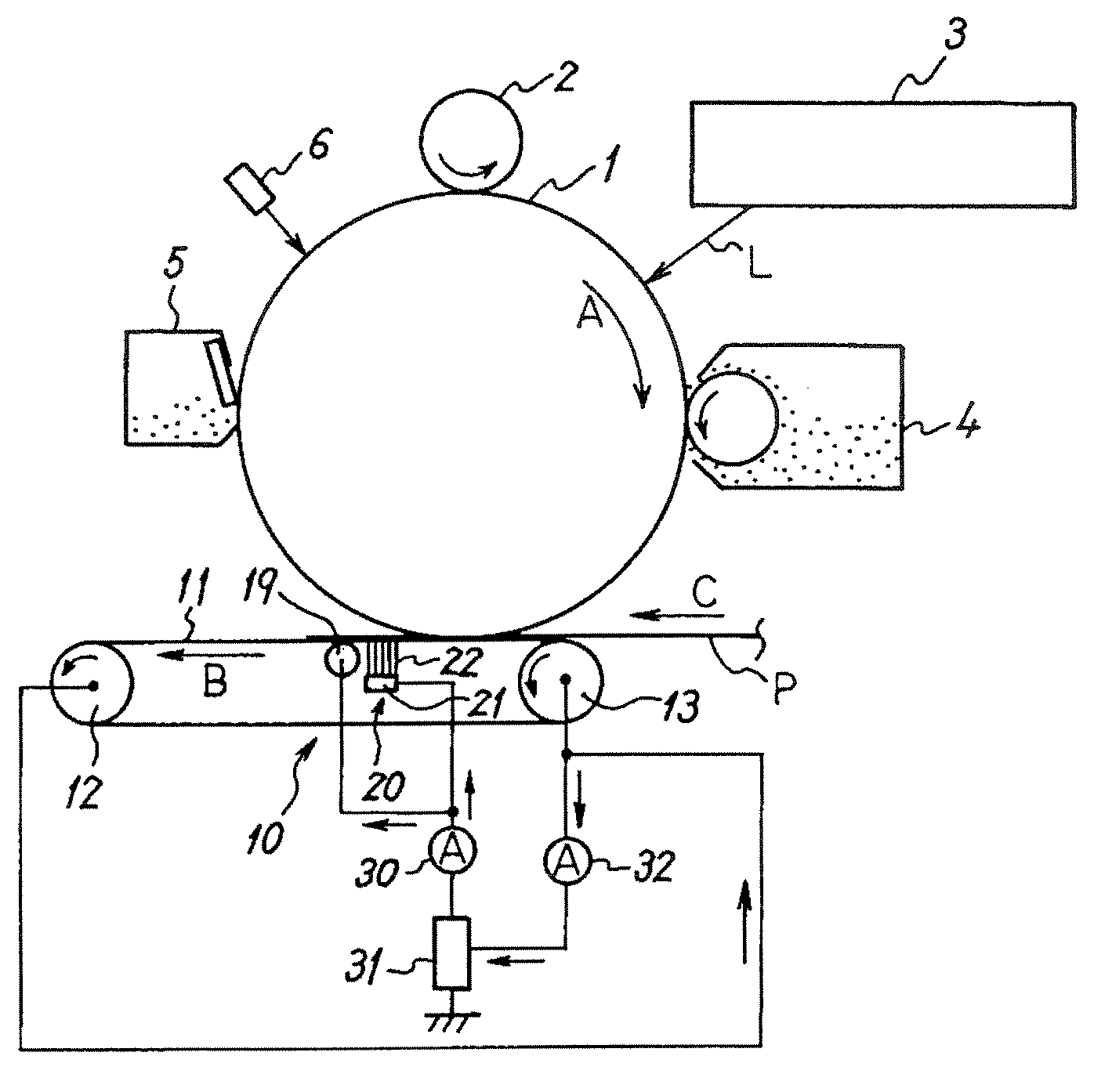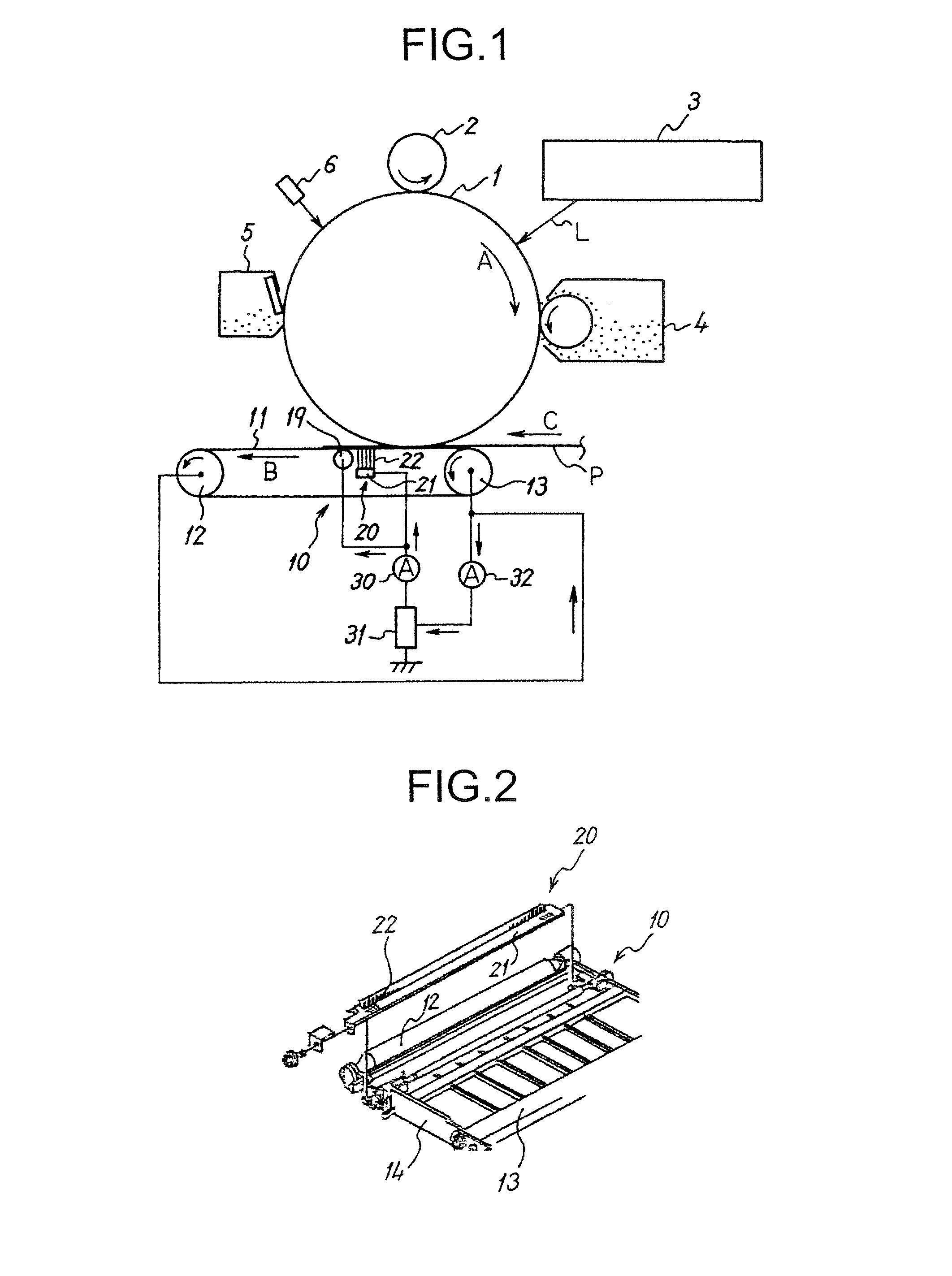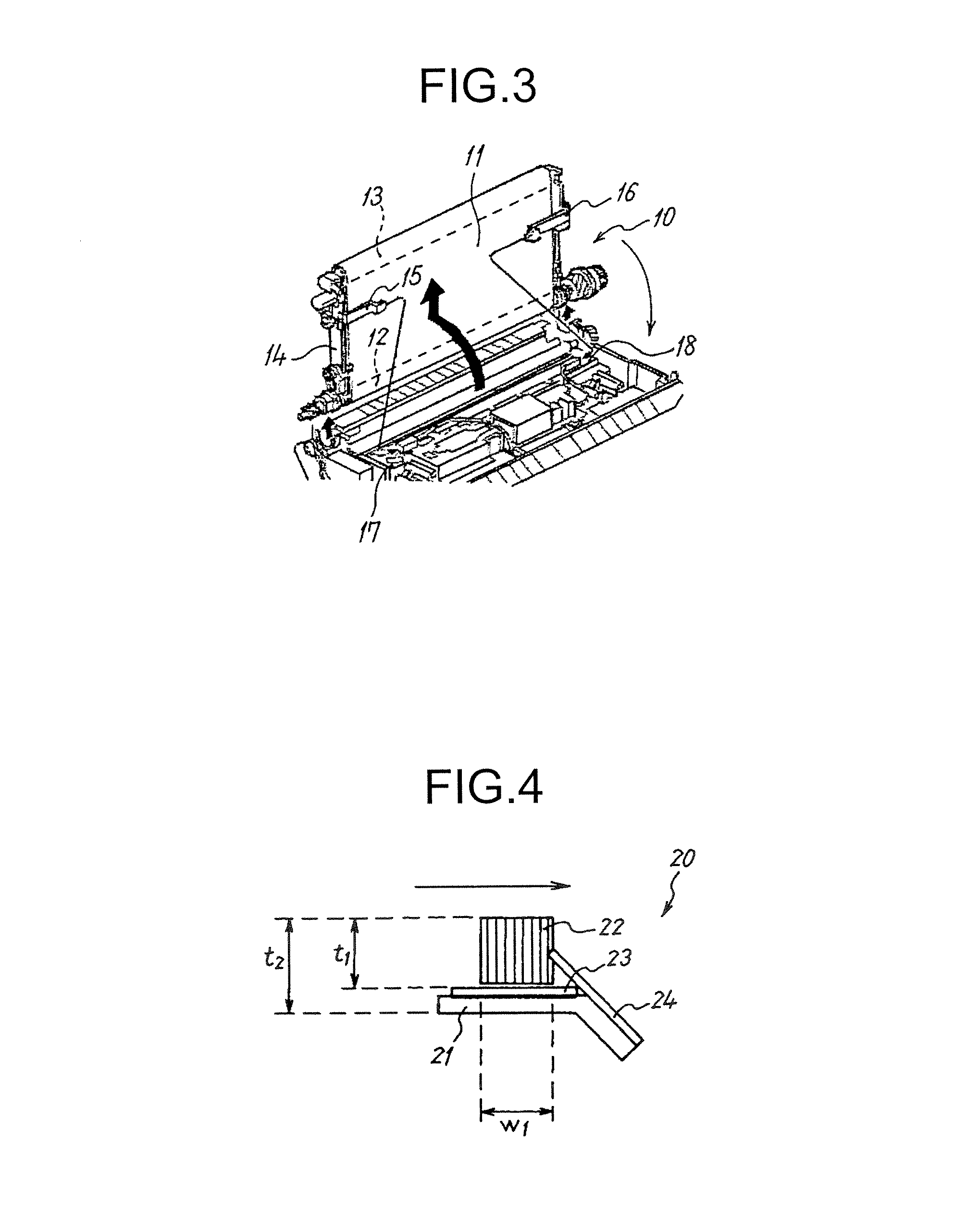Brush member and transfer device and image forming apparatus using the same
a transfer device and image forming technology, applied in the direction of electrographic process apparatus, instruments, optics, etc., can solve problems such as transfer blurring in transfer images
- Summary
- Abstract
- Description
- Claims
- Application Information
AI Technical Summary
Benefits of technology
Problems solved by technology
Method used
Image
Examples
first embodiment
[0024]FIG. 1 is a schematic of a printer according to the present invention. In the figure, a charging roller 2, an optical writing unit 3, a developing device 4 serving as a developing unit, a transfer device 10, a drum cleaning device 5, an electricity removing lamp 6, and the like are disposed around a drum-like photosensitive member 1 serving as a latent image bearing member.
[0025]The photosensitive member 1 is driven to rotate in a clockwise direction in the figure (a direction of an arrow A in the figure) by a not-shown driving unit. The photosensitive member 1 is uniformly charged to a minus polarity in the dark by the charging roller 2 to which a charging bias is applied by a not-shown power supply. A surface potential of the photosensitive member 1 after the uniform charging is, for example, −800 volts. On the surface of the photosensitive member 1 in such a potential state, an electrostatic latent image corresponding to an image signal is formed by optical scanning by an o...
second embodiment
[0049]As shown in Table 2, it is seen that the transfer brushes 20 of nylon had small maximum bristle inclination amounts compared with that of nylon. Although not shown in Table 2, in both the two kinds of the transfer brushes 20 of nylon in Table 2, shaving of the rear surface of the paper conveyor belt 11 and transfer blurring did not occur even if the test image was printed on 100,000 pieces of transfer paper. On the other hand, in the transfer brush 20 of rayon, shaving of the rear surface of the paper conveyor belt 11 and transfer blurring occurred while the test image was printed on 100,000 pieces of transfer paper. Consequently, it was found that shaving of the rear surface of the paper conveyor belt 11 due to rubbing against the transfer brush 20 and transfer blurring due to accumulation of shavings on the brush tip could be controlled by using, as the transfer brush 20, a transfer brush with a maximum bristle inclination amount equal to or smaller than the maximum bristle ...
third embodiment
As shown in Table 3, whereas maximum bristle inclination return amounts in the transfer brushes 20 of nylon were 0.30, a maximum bristle inclination return amount in the transfer brush 20 of rayon was 0.40. Consequently, it is seen that bristle inclination does not easily return to the original state in the transfer brushes 20 of nylon compared with that of rayon. Although not shown in Table 3, as described above, whereas shaving of the rear surface of the paper conveyor belt 11 and transfer blurring did not occur in both the two kinds of transfer brushes 20 of nylon, shaving of the rear surface of the paper conveyor belt 11 and transfer blurring occurred in the transfer brush 20 of rayon. Consequently, it was found that shaving of the rear surface of the paper conveyor belt 11 due to rubbing against the transfer brush 20 and transfer blurring due to accumulation of shavings on the brush tip could be controlled by using, as the transfer brush 20, a transfer brush with a maximum bris...
PUM
 Login to View More
Login to View More Abstract
Description
Claims
Application Information
 Login to View More
Login to View More - R&D
- Intellectual Property
- Life Sciences
- Materials
- Tech Scout
- Unparalleled Data Quality
- Higher Quality Content
- 60% Fewer Hallucinations
Browse by: Latest US Patents, China's latest patents, Technical Efficacy Thesaurus, Application Domain, Technology Topic, Popular Technical Reports.
© 2025 PatSnap. All rights reserved.Legal|Privacy policy|Modern Slavery Act Transparency Statement|Sitemap|About US| Contact US: help@patsnap.com



